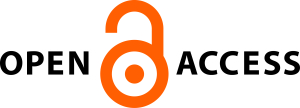Exclusive Breastfeeding Versus Combination Feeding on Incidence of Atopic Dermatitis: A Comparative Study
DOI:
https://doi.org/10.32734/scripta.v6i2.17865Keywords:
atopic dermatitis, Exclusive breastfeeding, Hanifin Rajka, Infants, Formula Feeding, ASI eksklusif, Bayi, Dermatitis atopi, Susu formulaAbstract
Background. In spite of the extensive research on the potential protective effects of exclusive breastfeeding in preventing the occurrence of atopic dermatitis and the involvement of cow’s milk allergy as a triggering factor, controversies regarding this issue persist. Objective. This study analyzes the comparison of the incidence of AD among infants exclusively breastfed compared to those who receive a combination of formula milk and breastfeeding. Methods. This study is an analytical research with a cross-sectional approach, conducted at Puskesmas Sentosa Baru Medan in August 2023. The sample consisted of 114 infants, which divided into two groups: exclusively breastfed infants and the other consisting of infants who received a combination of breastfeeding and formula milk, selected through consecutive sampling. The diagnosis of AD was based on a questionnaire modified from the Hanifin-Rajka criteria. Results. According to the research findings, among the exclusively breastfed infants, 11 (19,3%) were found to have AD, whereas in the opposing group, there were 12 (21,1%) cases of AD. Statistical analysis indicated no significant difference in the incidence of AD based on early feeding history (p=0,815). The prevalence ratio of AD infants from both study group is 1,10. Conclusions. Infants who receive a combination of breast milk and formula feeding have an elevated risk of 1,1 times for the onset of AD compared to those who are exclusively breastfed. There is no significant difference in the incidence of AD among infants who are exclusively breastfed and those who receive a combination of breast and formula feeding.
Latar belakang. Meskipun telah banyak penelitian mengenai potensi efek perlindungan ASI eksklusif dalam mencegah terjadinya dermatitis atopik dan keterlibatan alergi susu sapi sebagai faktor pemicu, kontroversi mengenai hal ini masih terus berlanjut. Tujuan. Penelitian ini bertujuan untuk menganalisis perbandingan kejadian DA pada bayi yang mendapat ASI eksklusif dibandingkan dengan bayi yang mendapat kombinasi susu formula dan ASI. Metode. Penelitian ini merupakan penelitian analitik dengan pendekatan potong lintang, yang dilakukan di Puskesmas Sentosa Baru Medan pada bulan Agustus 2023. Sampel terdiri dari 114 bayi, yang dibagi menjadi dua kelompok yaitu bayi yang diberi ASI eksklusif dan bayi yang diberi kombinasi ASI dan susu formula, yang dipilih secara consecutive sampling. Selanjutnya, diagnosis DA didasarkan pada kuesioner yang dimodifikasi dari kriteria Hanifin-Rajka. Hasil. Menurut temuan penelitian, di antara bayi yang disusui secara eksklusif, 11 (19,3%) ditemukan menderita DA, sedangkan pada kelompok yang tidak disusui, terdapat 12 (21,1%) kasus DA. Analisis statistik menunjukkan tidak ada perbedaan yang signifikan dalam kejadian PJB berdasarkan riwayat pemberian makanan awal (p=0,815). Rasio prevalensi bayi AD dari kedua kelompok penelitian adalah 1,10. Kesimpulan. Bayi yang menerima kombinasi ASI dan susu formula memiliki risiko 1,1 kali lebih tinggi untuk mengalami PJB dibandingkan dengan bayi yang mendapat ASI eksklusif. Tidak ada perbedaan yang signifikan dalam kejadian DA antara bayi yang diberi ASI eksklusif dan mereka yang menerima kombinasi ASI dan susu formula.
Downloads
Downloads
Published
How to Cite
Issue
Section
License
Copyright (c) 2025 Nova Zairina Lubis, Albert Wijaya, Hilfan Ade Putra Lubis, Muhammad Aron Pase

This work is licensed under a Creative Commons Attribution-NonCommercial 4.0 International License.
Authors who publish with SCRIPTA SCORE Scientific Medical Journal agree to the following terms:
- Authors retain copyright and grant SCRIPTA SCORE Scientific Medical Journal right of first publication with the work simultaneously licensed under a Creative Commons Attribution-NonCommercial License that allows others to remix, adapt, build upon the work non-commercially with an acknowledgment of the work’s authorship and initial publication in SCRIPTA SCORE Scientific Medical Journal.
- Authors are permitted to copy and redistribute the journal's published version of the work non-commercially (e.g., post it to an institutional repository or publish it in a book), with an acknowledgment of its initial publication in SCRIPTA SCORE Scientific Medical Journal.














